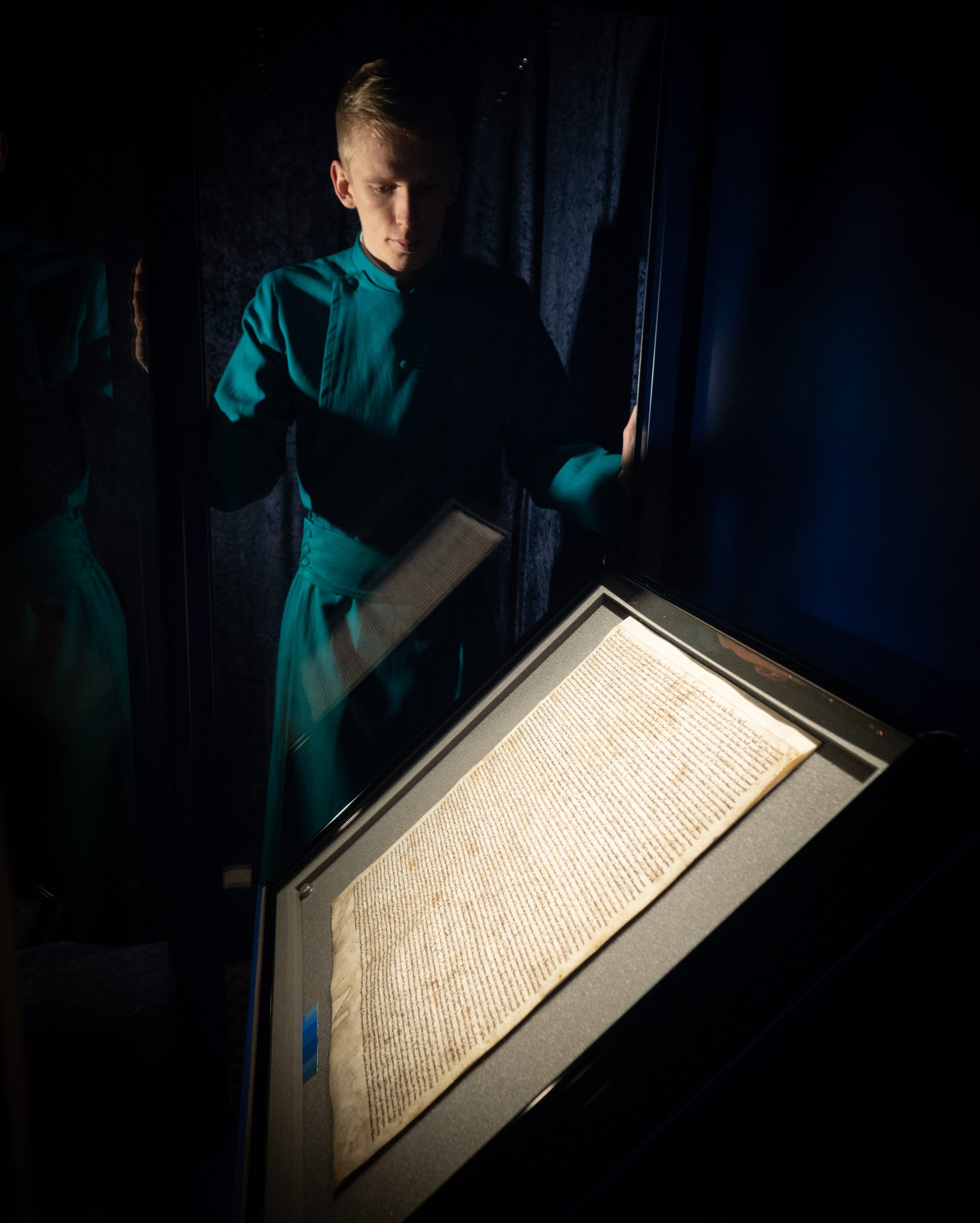Magna Carta means ‘great charter’ in Latin.
It was agreed by King John on 15 June 1215 as a way of making peace with a group of English barons (noblemen) and church leaders. The barons were protesting against high taxes demanded by King John from the English people to pay for his wars against France.
Magna Carta limited the powers of the monarchy. It said that the King or Queen was subject to the law and could not exploit their position and power to rule just as they wanted to. Magna Carta also stated that individuals had specific rights.
In Magna Carta King John agreed many clauses (promises), not just about taxes, but on many other issues important to the English people in the 1200s. These included: the rights of widows, the seizing of corn and horses, and the standardisation of measures for wine and cloth. Most of the clauses listed in Magna Carta have now been replaced by new laws but two key clauses are still part of English law today. These two clauses assert the rights and freedoms of individual citizens.
Our copy of Magna Carta was probably delivered to the first Salisbury Cathedral at Old Sarum in 1215 by Elias Dereham, who was present when King John agreed Magna Carta. Elias later became a priest at Salisbury Cathedral and oversaw the building of the current Cathedral from 1220 onwards.
Another Salisbury connection with Magna Carta is William Longespée, 3rd earl of Salisbury. He is named in Magna Carta, and was an important English baron. William, and his wife Ela, laid two of the Cathedral’s foundation stones in 1220.





